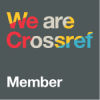The re-design of a fourth year Bachelor of Education programme using the Constructive Alignment Approach
Abstract
The focus of this article is on the re-design of a fourth year Bachelor of Education (B.Ed) programme at the University of the Western Cape (UWC). Due to the changes in teacher qualifications, as outlined in the 2015 Minimum Requirements for Teacher Education Qualification (MRTEQ) policy document, Higher Education Institutions were required to adapt their Initial Teaching Education (ITE) programmes to meet the requirements of the new policy document. This article describes the use of a backward mapping approach, in conjunction with the application of a constructive alignment framework, used by the education faculty at UWC to adjust the teaching and learning in the B.Ed programme to address the outcomes and standards required by the MRTEQ policy document. Given the type of student enrolled at UWC, the article provides a discussion on the challenges involved in developing a programme for students who might not have been adequately prepared for their tertiary studies due to the disadvantaged school contexts they come from. The article thus provides a reflective discussion on the challenges involved in the re-design process that used the pre-service teacher competencies expected at the end of the B.Ed programme at UWC, to develop the teaching and learning programme and assessment tasks for the fourth year B.Ed course.
Received: 02 August 2018
Accepted: 31 October 2018
Published online: 29 November 2018
Downloads
References
Bernstein, Basil. Class, Codes and Control, vol.3: Towards a Theory of Educational Transmissions. London: Routledge, 1975.
Biggs, John. “Enhancing teaching through constructive alignment.” Higher education 32, no. 3 (1996): 347-364.
_____. “What the Student Does: Teaching for Enhanced Learning.” Higher Education Research & Development 31, no. 1 (2012): 39–55.
_____. “Constructive Alignment in University Teaching.” HERDSA Review of Higher Education 1 (2014): 5–22.
Biggs, John, and Catherine Tang. Designing intended learning outcomes. England: Open University Press, 2007.
Cain, Andrew, and Clinton Woodward. “Toward constructive alignment with portfolio assessment for introductory programming.” In Teaching, Assessment and Learning for Engineering (TALE), (2012 IEEE International Conference): 1-11.
Council on Higher Education. Council on Higher Education 2007-2008 Annual Report. Pretoria, 2008.
Department of Basic Education. Norms and Standards for Educators. Pretoria, 2000.
_____. National Qualifications Framework Act (67/2008): Revised Policy on the Minimum Requirements for Teacher Education Qualifications. Pretoria, 2015.
Devlin, Marcia, and Gayani Samarawickrema. “The criteria of effective teaching in a changing higher education context.” Higher Education Research & Development 29, no. 2 (2010): 111-124.
Fleisch, Brahm. Primary education in crisis: Why South African schoolchildren underachieve in reading and mathematics. Cape Town: Juta, 2008.
Grossman, Pamela. “Overcoming the apprenticeship of observation in teacher education coursework.” Teaching and Teacher Education 7, no. 4 (1991): 345-357.
Killen, Roy, Marietha Nieman, and William Fraser. “Issues in competence and pre- service teacher education. Part 2: the assessment of teaching practice.” South African Journal of Higher Education 19, no. 2 (2005): 246-259.
Lancaster, Julie, and Greg Auhl. “Encouraging pattern language development in a pre-service inclusive education course: A comparative study.” International Journal of Disability, Development and Education 60, no. 4 (2013): 363-381.
Larkin, Helen, and Ben Richardson. “Creating high challenge/high support academic environments through constructive alignment: student outcomes.” Teaching in higher education 18, no. 2 (2013): 192-204.
Lortie, Dan. Schoolteacher: A sociological study. Chicago: University of Chicago Press, 1977.
Sosibo, Lungi, Willie Van Vollenhoven, Lee Rusznyak, and Robert Balfour. “Why academic depth and rigour in university-based coursework matters for prospective teachers.” Perspectives in Education 34, no. 1 (2016): 1-9.
University of the Western Cape. Charter of Graduate Attributes and Strategic Plan for Teaching and Learning. Cape Town, 2009: 5.
Young, Michael. “From constructivism to realism in the sociology of the curriculum.” Review of research in education 32, no. 1 (2008): 1-28.
Authors are required to sign and submit a copyright transfer agreement after acceptance but before publication of their manuscript. To that effect, they receive, from the Managing Editor of Tuning Journal for Higher Education, a standard copyright assignment form designed along the following lines:
1. Authorship:
The author who signs the copyright transfer agreement must be the sole creator of the work or legally acting on behalf of and with the full agreement of all the contributing authors.
2. Copyright and Code of conduct:
a) Authors warrant that their work is original; has not been previously copyrighted or published in any form; is not under consideration for publication elsewhere; its submission and publication do not violate TJHE Ethical Guidelines for Publication and any codes (of conduct), privacy and confidentiality agreements, laws or any rights of any third party; and no publication payment by the Publisher (University of Deusto) is required.
b) Authors are solely liable for the consequences that may arise from third parties’ complaints about the submitted manuscript and its publication in Tuning Journal for Higher Education (TJHE).
c) Authors grant to the Publisher the worldwide, sub-licensable, and royalty-free right to exploit the work in all forms and media of expression, now known or developed in the future, for educational and scholarly purposes.
d) Authors retain the right to archive, present, display, distribute, develop, and republish their work (publisher's version) to progress their scientific career provided the original publication source (Tuning Journal) is acknowledged properly and in a way that does not suggest the Publisher endorses them or their use of the wortk.
e) Authors warrant that no permissions or licences of any kind will be granted that might infringe the rights granted to the Publisher.
3. Users:
Tuning Journal for Higher Education is an Open Access publication. Its content is free for full and immediate access, reading, search, download, distribution and reuse in any medium or format only for non-commercial purposes and in compliance with any applicable copyright legislation, without prior permission from the Publisher or the author(s). In any case, proper acknowledgement of the original publication source must be made and any changes to the original work must be indicated clearly and in a manner that does not suggest the author’s and or Publisher’s endorsement whatsoever. Any other use of its content in any medium or format, now known or developed in the future, requires prior written permission of the copyright holder.


1.jpg)
1.jpg)
.jpg)
1.jpg)
.jpg)
.jpg)









